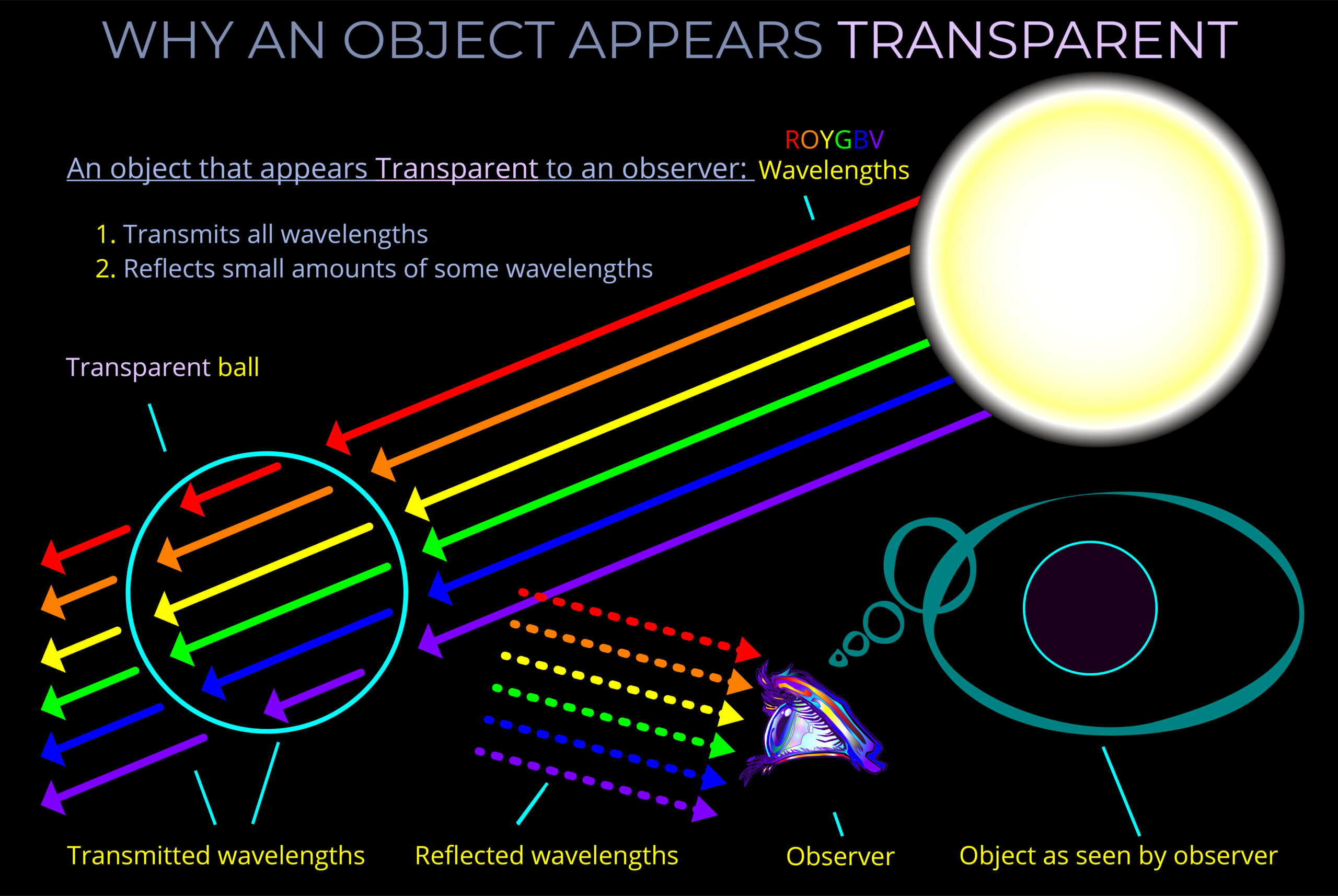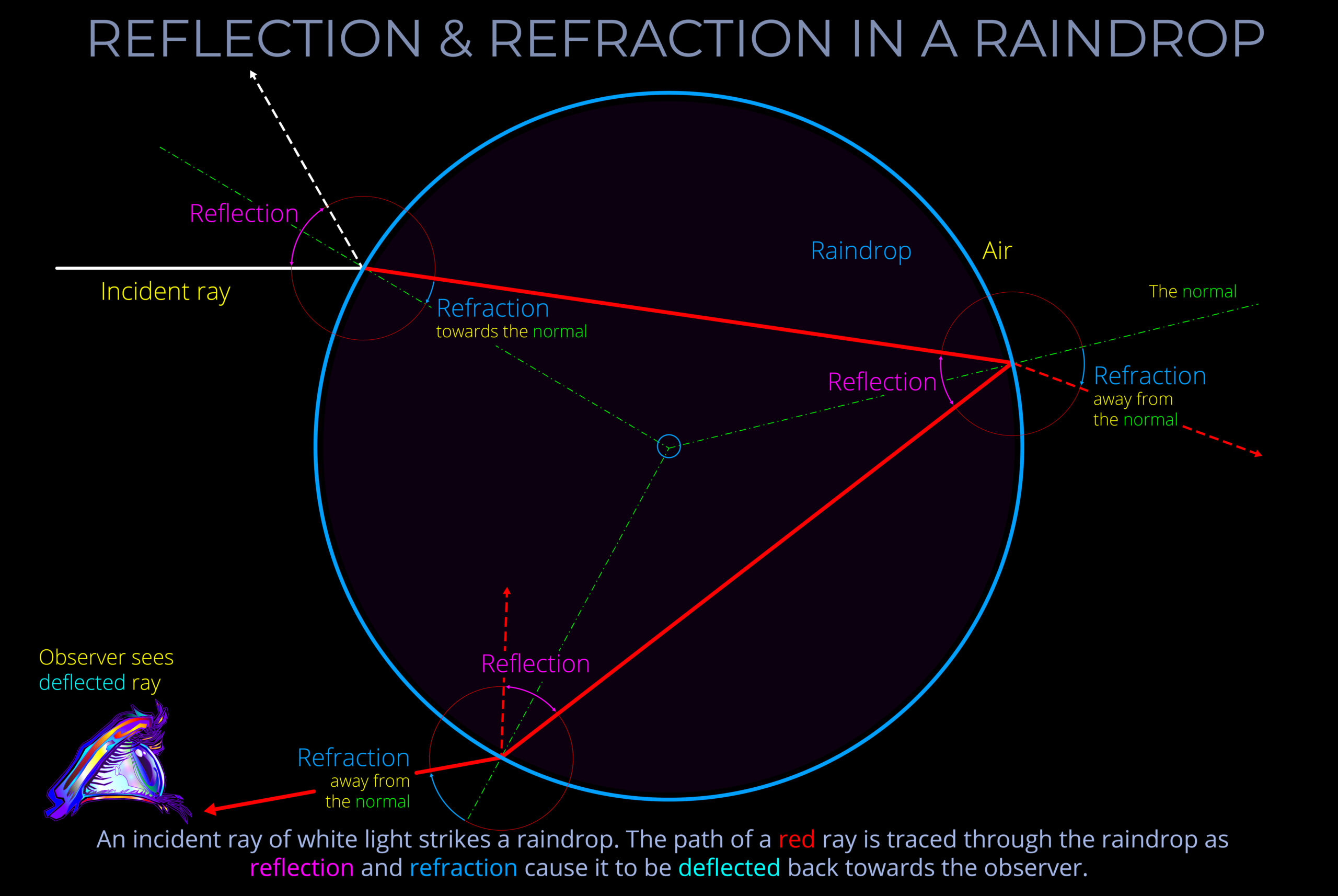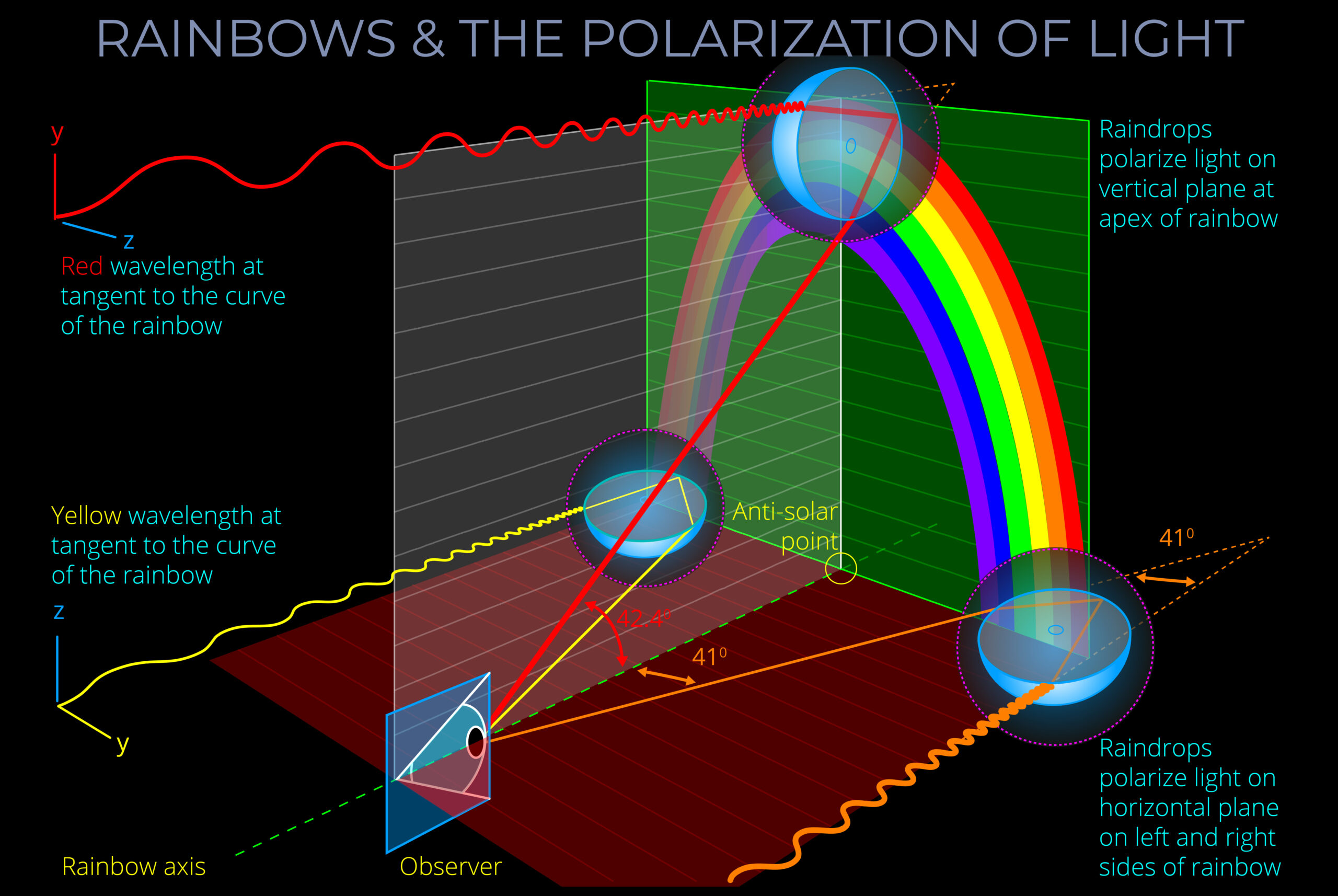Optical phenomena result from the interactions between light and matter. Optical phenomena include absorption, dispersion, diffraction, polarization, reflection, refraction, scattering and transmission.
- Optics is the branch of physics that studies the behaviour and properties of light, including visible, ultraviolet, and infrared light.
- Visible, ultraviolet, and infrared light, along with X-rays, microwaves, and radio waves, are all examples of electromagnetic radiation.
- Many optical phenomena can be explained using the classical electromagnetic theory that describes light in terms of waves.
- Geometric optics describes light as travelling in straight lines and changing direction when passing through or reflecting from surfaces. These phenomena can be analysed using ray diagrams.
- Ray diagrams are useful when explaining the workings of everyday objects such as mirrors, lenses, telescopes, microscopes, lasers, and fibre optic devices.
- Some optical effects such as diffraction and interference can be explained in terms of the particle-like properties of photons and with reference to the field of quantum mechanics.
- About photons:
- A photon is a fundamental particle of light.
- It is the smallest unit of electromagnetic radiation.
- It has no mass, but it does have energy and momentum.
- Photons travel at the speed of light in a vacuum (299,792,458 meters per second).
References
- Optical phenomena result from the interactions between light and matter. Optical phenomena include absorption, dispersion, diffraction, polarization, reflection, refraction, scattering and transmission.
- Optics is the branch of physics that studies the behaviour and properties of light, including visible, ultraviolet, and infrared light.
- Visible, ultraviolet, and infrared light, along with X-rays, microwaves, and radio waves, are all examples of electromagnetic radiation.
- Many optical phenomena can be explained using the classical electromagnetic theory that describes light in terms of waves.
- Geometric optics describes light as travelling in straight lines and changing direction when passing through or reflecting from surfaces. These phenomena can be analysed using ray diagrams.
- Ray diagrams are useful when explaining the workings of everyday objects such as mirrors, lenses, telescopes, microscopes, lasers, and fibre optic devices.
- Some optical effects such as diffraction and interference can be explained in terms of the particle-like properties of photons and with reference to the field of quantum mechanics.


